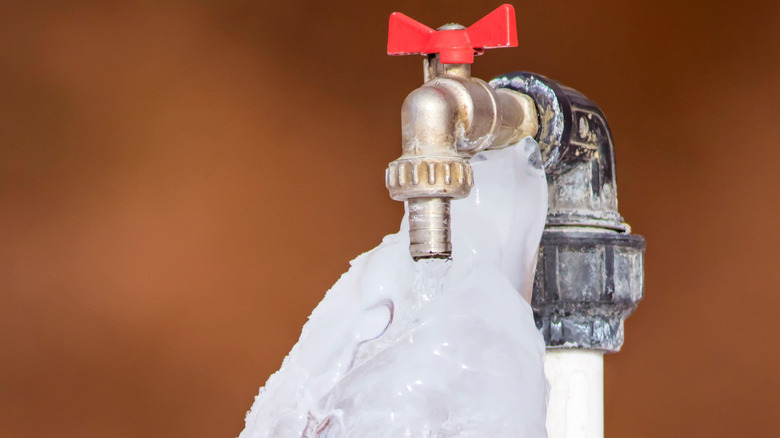Essential Tips to Prevent Frozen Plumbing in Winter
Essential Tips to Prevent Frozen Plumbing in Winter
Blog Article
This great article directly below involving Helpful Tips to Prevent Frozen Pipes this Winter is totally enlightening. Check it out yourself and decide what you think of it.

Winter can wreak havoc on your pipes, especially by freezing pipes. Here's exactly how to avoid it from occurring and what to do if it does.
Introduction
As temperatures decline, the threat of frozen pipes rises, possibly resulting in costly fixings and water damages. Understanding just how to avoid frozen pipelines is important for homeowners in chilly climates.
Recognizing Frozen Pipelines
What causes pipelines to ice up?
Pipes ice up when exposed to temperature levels below 32 ° F (0 ° C) for prolonged durations. As water inside the pipes ices up, it increases, putting pressure on the pipe walls and potentially triggering them to burst.
Dangers and damages
Icy pipes can cause water disruptions, home damage, and expensive repair services. Ruptured pipes can flood homes and create substantial structural damage.
Signs of Frozen Piping
Recognizing icy pipelines early can avoid them from breaking.
Just how to determine icy pipes
Seek decreased water flow from faucets, unusual smells or noises from pipelines, and visible frost on exposed pipes.
Prevention Tips
Insulating at risk pipelines
Cover pipelines in insulation sleeves or utilize warmth tape to shield them from freezing temperature levels. Concentrate on pipes in unheated or outside areas of the home.
Heating methods
Keep indoor areas appropriately heated, specifically areas with pipes. Open up cupboard doors to permit warm air to distribute around pipelines under sinks.
Protecting Outdoor Pipes
Yard hoses and outdoor faucets
Separate and drain garden tubes prior to winter season. Install frost-proof faucets or cover outdoor faucets with shielded caps.
What to Do If Your Pipes Freeze
Immediate actions to take
If you believe frozen pipelines, keep taps open to alleviate stress as the ice melts. Make use of a hairdryer or towels soaked in hot water to thaw pipelines gradually.
Long-Term Solutions
Architectural adjustments
Take into consideration rerouting pipes far from outside wall surfaces or unheated areas. Include added insulation to attic rooms, cellars, and crawl spaces.
Upgrading insulation
Purchase premium insulation for pipelines, attic rooms, and wall surfaces. Appropriate insulation assists maintain consistent temperatures and lowers the danger of icy pipes.
Verdict
Avoiding icy pipes requires aggressive measures and fast feedbacks. By comprehending the causes, indicators, and preventive measures, house owners can protect their plumbing throughout cold weather.
5 Ways to Prevent Frozen Pipes
Drain Outdoor Faucets and Disconnect Hoses
First, close the shut-off valve that controls the flow of water in the pipe to your outdoor faucet. Then, head outside to disconnect and drain your hose and open the outdoor faucet to allow the water to completely drain out of the line. Turn off the faucet when done. Finally, head back to the shut-off valve and drain the remaining water inside the pipe into a bucket or container. Additionally, if you have a home irrigation system, you should consider hiring an expert to clear the system of water each year.
Insulate Pipes
One of the best and most cost-effective methods for preventing frozen water pipes is to wrap your pipes with insulation. This is especially important for areas in your home that aren’t exposed to heat, such as an attic. We suggest using foam sleeves, which can typically be found at your local hardware store.
Keep Heat Running at 65
Your pipes are located inside your walls, and the temperature there is much colder than the rest of the house. To prevent your pipes from freezing, The Insurance Information Institute suggests that you keep your home heated to at least 65 degrees, even when traveling. You may want to invest in smart devices that can keep an eye on the temperature in your home while you’re away.
Leave Water Dripping
Moving water — even a small trickle — can prevent ice from forming inside your pipes. When freezing temps are imminent, start a drip of water from all faucets that serve exposed pipes. Leaving a few faucets running will also help relieve pressure inside the pipes and help prevent a rupture if the water inside freezes.
Open Cupboard Doors
Warm your kitchen and bathroom pipes by opening cupboards and vanities. You should also leave your interior doors ajar to help warm air circulate evenly throughout your home.

We are very eager about How To Avoid Freezing Pipes and I hope you liked the new piece. For those who liked our blog entry kindly do not forget to share it. I appreciate your readership.
Schedule Your Service Report this page